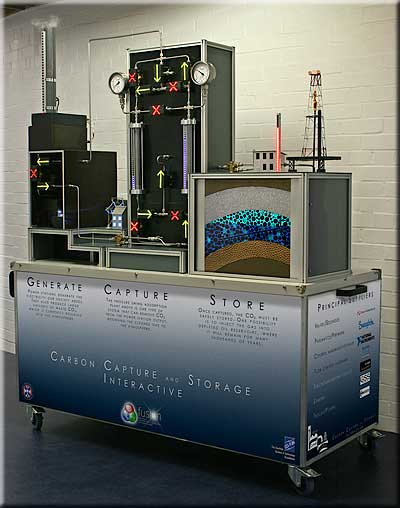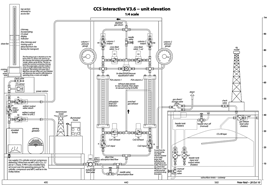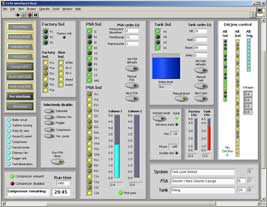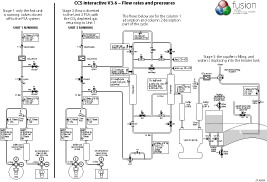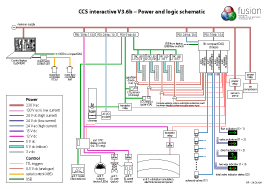|
Case study #1
The Carbon Capture and Storage Interactive
CCSI overview The desktop-sized interactive is built in three sections: a power station model, which produces a CO2-rich output; a working, two-column, vacuum-swing gas adsorption system, used to demonstrate the capture of the CO2 and the return of the cleaned flue gases; and a simulation of the transport and subsequent injection of the captured CO2 into a disused oil field. (A one-page description of the interactive can be found in the following PDF file.) Although initially intended to be used as a public engagement interactive targeted mainly at a schools audience, the CCSI has been used on many occasions by BDEs in Engineering and GeoSciences, at exhibitions and conferences, as part of the introduction to the work carried out by the University in both carbon capture (Engineering) and storage (GeoSciences). The CCSI was taken to schools in the 2010-11 academic year, as part of the SCI-FUN Roadshow's "Hot Topics in Research" presentation, showcasing some of the research being carried out by the College of Science and Engineering. In 2011 it was also taken to the Hebridean Science Festival and the Edinburgh International Science Festival. Film clips showing the interactive in operation can be found at the research presentation page mentioned above, and at the following YouTube link. |
|||||||
|
|
|||||||
|
FUSION and SCI-FUN responsibilities
The CCSI is the first of FUSION's large-scale projects: with a grant of £100,000, including an equipment budget of £40,000, the interactive represented a step-change in the types of project developed by the team. This was also the first time in which FUSION was formally acknowledged as a grant partner to a University research team. Development took place between March 2009 and August 2010. Some key aspects of the project are listed below.
|
|||||||
|
|
|||||||

